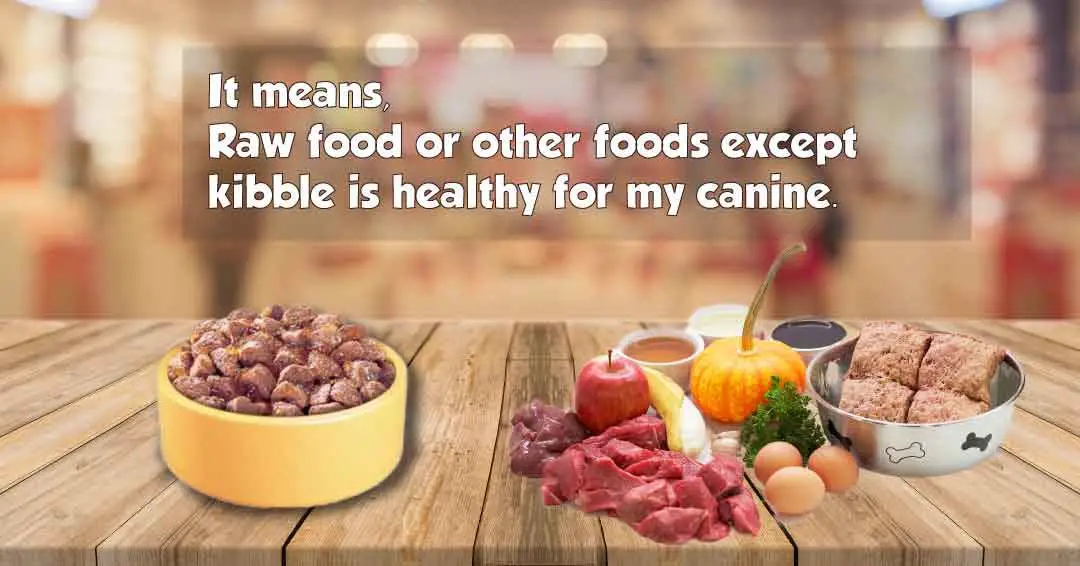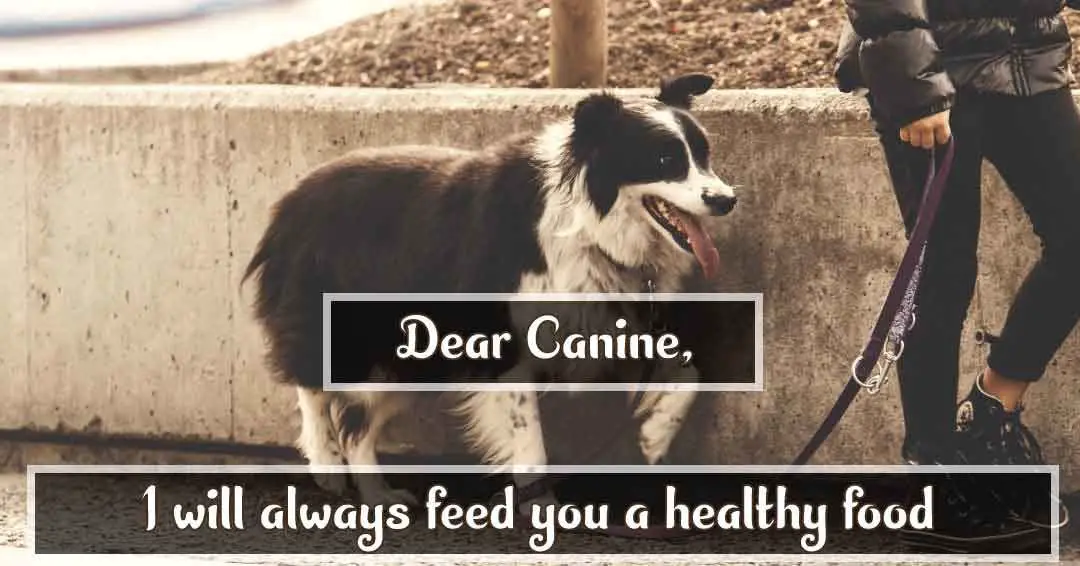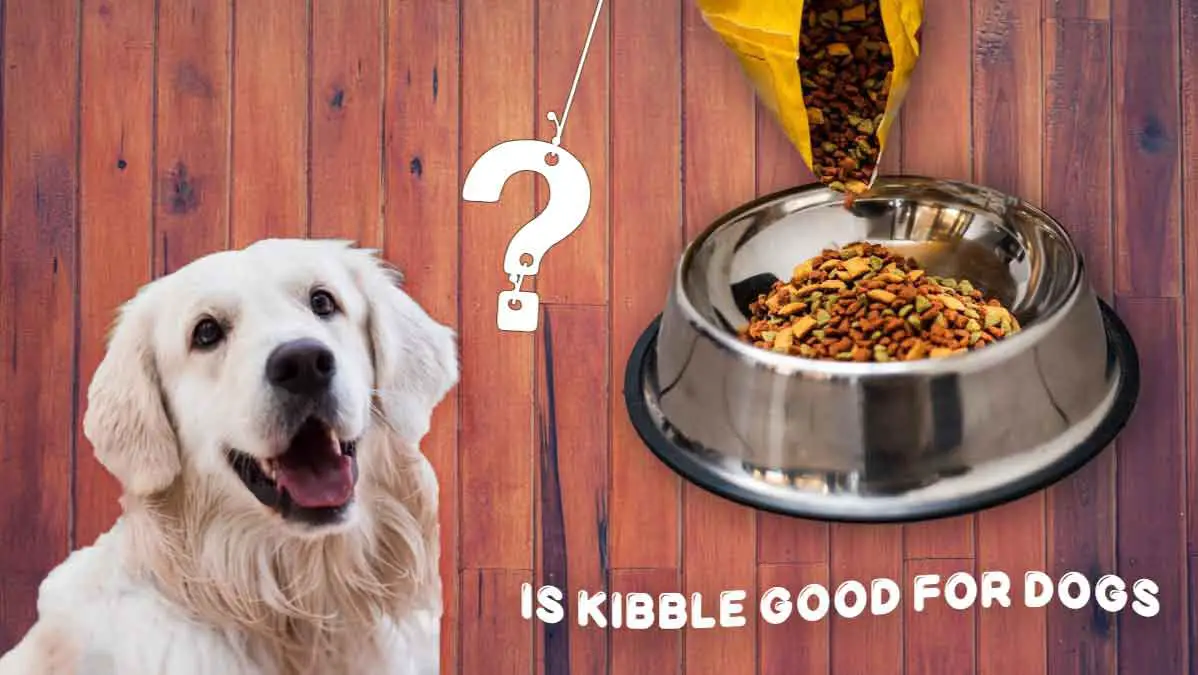Kibble, known as dry dog food, is popular with pet owners due to its convenience, long shelf life, and affordability. However, there has been an ongoing debate among pet owners: is Kibble good for dogs or bad? Or is it a healthy choice for dogs? It is convenient, easy to store, and available in various flavors and brands. However, there has been growing concern about the health impact of Kibble on dogs.
Issues with Kibble
While Kibble is convenient and easy to store, it has been linked to several potential health issues for dogs. Some of the main issues with Kibble include the following:

1. Poor Nutrition
2. Dental Problems
3. Digestive Problems
Poor Nutrition
Many kibble brands contain fillers and artificial preservatives, which can negatively impact a dog’s nutrition.
Dental Problems
Kibble can be hard and dry, leading to dental problems such as tooth decay and gum disease.
Digestive Problems
It’s difficult for some dogs to digest, leading to gastrointestinal problems such as bloating, diarrhea, and constipation.
Debunking The Myths: Is Kibble Good For Dogs?
Despite these potential issues, many experts believe Kibble can be a good option for dogs.
1. Convenience
2. Affordability
3. Nutritional Value
Convenience
Kibble is easy to store, and many brands offer a variety of flavors and formulas to meet a dog’s nutritional needs.
Affordability
Kibble is often more affordable than other types of dog food, making it a popular choice for budget-conscious pet owners.
Nutritional Value
Some kibble brands contain high-quality ingredients and essential nutrients, making them a healthy option for dogs.
As pet owners, we want to ensure our furry friends get the best nutrition. With so many available options, it can take time to determine what type of food is best for our dogs. One of the most popular types of dog food is Kibble. However, there is growing concern that is Kibble good for dogs. In this article, we will examine the pros and cons of Kibble and determine if it is a suitable choice for your canine companion.
Pros of Kibble
1. Convenience
2. Variety
3. Affordability
4. Nutritional Value
5. Shelf life
6. Portion control
7. Convenient for travel
8. Availability
Convenience
Kibble is an easy and convenient option for pet owners. It is easy to store and can be left out for the dog to eat at their leisure. Further, this makes it an ideal choice for busy pet owners who need more time to prepare meals for their dogs.
Variety
A wide variety of kibble brands and flavors are available on the market, making it easy for pet owners to find a brand their dog likes. This is particularly important for picky eaters who may refuse to eat other types of dog food.
Affordability
Kibble is often more affordable than other types of dog food, making it a popular choice for budget-conscious pet owners. This is especially true for high-quality kibble brands that provide excellent nutritional value without breaking the bank.
Nutritional Value
Many kibble brands are formulated to provide the necessary nutrients dogs need to maintain good health. This includes essential vitamins, minerals, and amino acids that support healthy growth, immune function, and overall well-being. Additionally, many kibble brands are designed to meet the specific nutritional needs of different breeds and life stages.
Shelf life
Kibble has a longer shelf life than fresh or raw food, which can be important for busy pet owners or those who live in areas with limited access to new food options.
Portion control
Kibble can help with portion control, as it is easy to measure the correct amount of food for your dog’s size and activity level.
Convenient for travel
Kibble is a convenient option for traveling with your dog, as it is easy to pack and doesn’t require refrigeration or special preparation.
Availability
Kibble is widely available at most pet stores and online retailers, making it easy to find and purchase for your dog’s diet.
Cons of Kibble
1. Fillers and Additives
2. Dental Health
3. Digestive Issues
4. Low moisture content
5. Quality control issues
6. Potential allergens
7. Lack of variety
Fillers And Additives
One of the main concerns about Kibble is that many brands contain fillers and artificial additives. These fillers may include grains like corn, wheat, and soy, which can be difficult for dogs to digest and may lead to allergies, skin problems, and other health issues. Additionally, some kibble brands may contain meat by-products, which are low-quality protein sources and may harm dogs’ health.
Dental Health
Kibble can be hard and dry, leading to dental problems such as tooth decay and gum disease. Some kibble brands may claim to promote dental health, but it is important to remember that chewing on hard Kibble alone is not enough to maintain good dental hygiene in dogs. Regular teeth brushing and professional dental cleanings are also necessary for good dental health.
Digestive Issues
Some dogs may have trouble digesting Kibble, leading to gastrointestinal problems such as bloating, diarrhea, and constipation. Generally, this is especially true for dogs with sensitive stomachs or digestive issues. In these cases, switching to a different dog food may be necessary to improve the dog’s digestive health.
Low Moisture Content
Kibble is typically dry and contains a low moisture content, which may not provide adequate hydration for some dogs.
Quality Control Issues
Some lower-quality kibbles may contain low-quality ingredients or harmful additives, such as artificial preservatives or colors.
Potential Allergens
Some dogs may have allergies or sensitivities to certain ingredients commonly found in Kibble, such as wheat, corn, or soy.
Lack Of Variety
Feeding only Kibble can lead to a lack of variety in a dog’s diet, which may only provide some necessary nutrients and vitamins for optimal health.
As a small breed owner, is Kibble healthy for dogs? Kibble is a popular and convenient choice for many dog owners. Still, it’s essential to consider the nutritional content of your dog food nutritional content to ensure they receive the best possible diet.
The Nutritional Needs Of Small Breed Dogs
Small breed dogs have unique nutritional needs compared to their larger counterparts. They require more calories per pound of body weight to maintain their high energy levels and fast metabolism. Small breed dogs also have smaller stomachs, so they need smaller, more frequent meals to prevent digestive issues. So, are kibbles good for dogs?
Small-breed dogs need a diet high in protein to maintain muscle mass and support their active lifestyle. They also require more fat than larger breeds to provide energy and support healthy skin and coats.
The Nutritional Content of Kibble
Kibble can be a good source of nutrition for small-breed dogs when made with high-quality ingredients. Look for kibble brands that contain whole meats as the primary protein source, such as chicken or lamb. Avoid Kibble that contains meat by-products or fillers like corn, wheat, or soy, which are less digestible and less nutritious.
In addition to protein, Kibble should contain healthy fats like omega-3 and omega-6 fatty acids, which support skin and coat health and aid in cognitive function. Kibble should also contain vitamins and minerals like vitamins A, D, calcium, and iron, essential for maintaining good overall health.
Kibble has long been the go-to option for dog owners to feed their furry friends. However, there have been concerns about Kibble’s safety and nutritional value in recent years. Some have even gone so far as to claim that Kibble is really bad for dogs. Many cross-breed owners ask, “Is kibble really bad for dogs?“
Final Words

While there are potential downsides and safety concerns associated with Kibble, it is okay for dogs when made with high-quality ingredients and used responsibly. It’s essential to understand that is Kibble good for dogs and choose a kibble brand made with whole meats and other wholesome ingredients and avoid those containing fillers or by-products. Additionally, it’s necessary to monitor your dog’s health, and adjusting its diet to get the nutrition they need to thrive is essential.


Leave a Reply